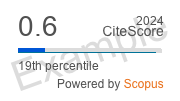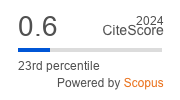Relationship between oxidative stress markers and clinical outcomes of radiofrequency ablation in patients with atrial fibrillation
https://doi.org/10.29001/2073-8552-2025-40-3-76-84
Abstract
Introduction. Oxidative stress holds a prominent position among the complex and multifactorial pathological mechanisms of atrial fibrillation (AF). It induces structural changes in the atria, promotes myocardial remodeling and arrhythmia progression, and is associated with recurrences after interventional treatment. Currently, there is a lack of data regarding the relationship between plasma levels of oxidative stress biomarkers and the clinical efficacy of catheter ablation for AF in patients with cardiac arrhythmias.
Aim: To assess levels of laboratory biomarkers of prooxidant and antioxidant status in the blood plasma of patients with AF and their relationship with the effectiveness of interventional treatment.
Material and Methods. The study included 39 patients with idiopathic AF hospitalized for interventional treatment by radiofrequency ablation (RFA) of the pulmonary vein ostia. Quantitative determination of biomarkers in the blood was performed by enzyme-linked immunosorbent assay (ELISA) before the surgery. Data on AF relapses and the time of their onset were collected and analyzed for 3 months.
Results. The patients were divided into groups: 1st gr. – paroxysmal AF, 2d gr. persistent, 3d gr. long-term persistent. In all groups, the PerOx level corresponded to a high degree of oxidative stress. In 1st gr. and 3d gr., the relationships between PerOx and the CRP level are shown. An increase in the duration of the disease period was associated with a decrease in the concentration of Gpx1 in the 1st gr. For 2d gr., the relationship of PerOx with the age of patients is shown. The effectiveness of RFA did not differ significantly between the groups and amounted to 78,6, 75 and 84,6%, respectively. The relationships of biomarkers with the development of arrhythmia recurrence after RFA are shown. In 1st gr., in patients with episodes of arrhythmia, the PerOx level was higher compared to other forms of AF.
Conclusion. Measuring biomarkers reflecting systemic oxidative stress and antioxidant status in patients with AF is a promising tool for monitoring and evaluating the effectiveness of interventional arrhythmia treatment.
Keywords
About the Authors
A. M. GusakovaRussian Federation
Anna M. Gusakova - Cand. Sci. (Pharm.), Research Scientist, Department of Clinical Laboratory Diagnostics, Cardiology Research Institute, Tomsk NRMC.
111a, Kievskaya str., Tomsk, 634012
T. E. Suslova
Russian Federation
Tatiana E. Suslova - Cand. Sci. (Med.), Head of the Department of Clinical Laboratory Diagnostics, Cardiology Research Institute, Tomsk NRMC.
111a, Kievskaya str., Tomsk, 634012
E. A. Archakov
Russian Federation
Evgenii A. Archakov - Cand. Sci. (Med.), Research Scientist, Laboratory of High Technologies for Diagnostics and Treatment of Cardiac Arrhythmias, Cardiology Research Institute, Tomsk NRMC.
111a, Kievskaya str., Tomsk, 634012
S. Yu. Usenkov
Russian Federation
Stanislav Yu. Usenkov - Cand. Sci. (Med.), Physician, Department of Surgical Treatment of Complex Cardiac Arrhythmias and Electrical Pacing, Cardiology Research Institute, Tomsk NRMC.
111a, Kievskaya str., Tomsk, 634012
R. E. Batalov
Russian Federation
Roman E. Batalov - Dr. Sci. (Med.), Head of the Laboratory of High Technologies for Diagnostics and Treatment of Cardiac Arrhythmias, Cardiology Research Institute, Tomsk NRMC.
111a, Kievskaya str., Tomsk, 634012
References
1. Stewart S., Hart C.L., Hole D.J., McMurray J.J. Population prevalence, incidence, and predictors of atrial fibrillation in the Renfrew/Paisley study. Heart. 2020;86(5):516–521. https://doi.org/10.1136/heart.86.5.516.
2. Andrade J.G., Deyell M.W., Khairy P., Champagne J., Leong-Sit P., Novak P. et al. Atrial fibrillation progression after cryoablation vs. radiofrequency ablation: the CIRCA-DOSE trial. Eur. Heart J. 2024;45(7):510–518. https://doi.org/10.1093/eurheartj/ehad572.
3. Haibo N., Morotti S., Zhang X., Dobrev D., Grandi E. Integrative human atrial modelling unravels interactive protein kinase A and Ca2+/ calmodulin-dependent protein kinase II signalling as key determinants of atrial arrhythmogenesis. Cardiovasc. Res. 2023;119:2294–2311. https://doi.org/10.1093/cvr/cvad118.
4. Shelemekhov A.E., Batalov R.E., Rogovskaya Ju.V., Gusakova A.M., Popov S.V., Khlynyn M.S. Catheter treatment of patients with atrial fibrillation and myocardial inflammation. Kardiologiia. 2020;60(3):102– 110. (In Russ.). https://doi.org/10.18087/cardio.2020.3.n891.
5. Archakov E.A., Batalov R.E., Usenkov S.U., Stepanov I.V., Afanasiev S.A., Popov S.V. Effectiveness of atrial fibrillation ablation in the presence of chronic myocarditis. Siberian Journal of Clinical and Experimental Medicine. 2023;38(4):97–105. (In Russ). https://doi.org/10.29001/2073-8552-2023-38-4-97-105.
6. Roşian Ş.H., Boarescu I., Boarescu P-M. Antioxidant and antiinflammatory effects of bioactive compounds in atherosclerosis. International Journal of Molecular Sciences. 2025;26(3):1379. https://doi.org/10.3390/ijms26031379.
7. Afzal S., Abdul Manap A.S., Attiq A., Albokhadaim I., Kandeel M., Alhojaily S.M. From imbalance to impairment: The central role of reactive oxygen species in oxidative stress-induced disorders and therapeutic exploration. Front. Pharmacol. 2023;14:1269581. https://doi.org/10.3389/fphar.2023.1269581.
8. Ho E., Karimi Galougahi K., Liu C.C., Bhindi R., Figtree G.A. Biological markers of oxidative stress: Applications to cardiovascular research маркер галектин-3 в диагностике воспалительных изменений ми окарда у пациентов с фибрилляцией предсердий. Медицинская иммунология. 2023;25(4):963–970. https://doi.org/10.15789/15630625-LBG-2743.
9. Opacic D., van Bragt K.A., Nasrallah H.M., Schotten U., Verheule S. Atrial metabolism and tissue perfusion as determinants of electrical and structural remodelling in atrial fibrillation. Cardiovasc. Res. 2016;109(4):527–541. https://doi.org/10.1093/cvr/cvw007.
10. Wijesurendra R.S., Casadei B. Mechanisms of atrial fibrillation. Heart. 2019;105:1860–1867. https://doi.org/10.1136/heartjnl-2018-314267.
11. Gusakova A.M., Rogovskaya Yu.V., Archakov E.A. Laboratory biomarker galectin-3 in the diagnostics of myocardial inflammatory changes in patients with atrial fibrillation. Medical Immunology (Russia). 2023;25(4):963–970. https://doi.org/10.15789/1563-0625-LBG-2743.
12. Hindricks G., Potpara T., Dagres N., Arbelo Е., Bax J.J., BlomstrӧmLundqvist С. et al. 2020 ESC Guidelines for the diagnosis and management of atrial fibrillation developed in collaboration with the European Association for Cardio-Thoracic Surgery (EACTS). Russian Journal of Cardiology. 2021;26(9):4701. (In Russ.) https://doi.org/10.15829/1560-4071-2021-4701.
13. Karakasis P., Theofilis P., Vlachakis P.K., Korantzopoulos P., Patoulias D., Antoniadis A.P. et al. Atrial fibrosis in atrial fibrillation: Mechanistic insights, diagnostic challenges, and emerging therapeutic targets. International Journal of Molecular Sciences. 2025;26(1):209. https://doi.org/10.3390/ijms26010209.
14. Deng H., Bai Y., Shantsila A., Fauchier L., Potpara T.S., Lip G.Y.H. Clinical scores for outcomes of rhythm control or arrhythmia progression in patients with atrial fibrillation: A systematic review. Clin. Res. Cardiol. 2017;106:813–823. https://doi.org/10.1007/s00392-017-1123-0.
15. Padfield G.J., Steinberg C., Swampillai J., Qian H., Connolly S.J., Dorian P. et al. Progression of paroxysmal to persistent atrial fibrillation: 10-year follow-up in the Canadian Registry of Atrial Fibrillation. Heart Rhythm. 2017;14(6):801–807. https://doi.org/10.1016/j.hrthm.2017.01.038.
16. Oikonomou E., Zografos T., Papamikroulis G.A., Siasos G., Vogiatzi G., Theofilis P. et al. Biomarkers in atrial fibrillation and heart failure. Current Medicinal Chemistry. 2019;26(5):873–887. https://doi.org/10.2174/0929867324666170830100424.
17. Sunderland N., Maruthappu M., Nagendran M. What size of left atrium significantly impairs the success of maze surgery for atrial fibrillation? Interactive CardioVascular and Thoracic Surgery. 2011;13(3):332–338.
18. Ihara K. Sasano T. Role of inflammation in the pathogenesis of atrial fibrillation. Front. Physiol. 2022;13:862164. https://doi.org/10.3389/fphys.2022.862164.
19. Sikora W., Kanikowska D., Budzianowski J., Kawka E., Rutkowski R., Korybalska K. Assessment of blood endothelial cell biomarkers in women and men with abnormal body mass and paroxysmal atrial fibrillation based on CHA2DS2-VASC score: A retrospective study. International Journal of Molecular Sciences. 2025;26(8):3627. https://doi.org/10.3390/ijms26083627.
Review
For citations:
Gusakova A.M., Suslova T.E., Archakov E.A., Usenkov S.Yu., Batalov R.E. Relationship between oxidative stress markers and clinical outcomes of radiofrequency ablation in patients with atrial fibrillation. Siberian Journal of Clinical and Experimental Medicine. 2025;40(3):76-84. (In Russ.) https://doi.org/10.29001/2073-8552-2025-40-3-76-84





.png)





























